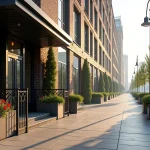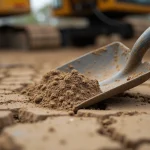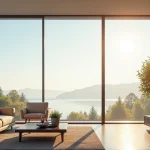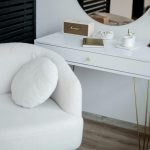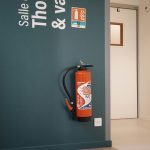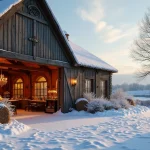Getting planning permission in Greenwich requires precision-crafted drawings that meet the borough’s exacting standards. With Greenwich Council approving 87% of applications in 2025, having the right technical drawings significantly increases your chances of success.
Are you confident your drawings will navigate Greenwich’s unique blend of historic conservation areas and modern development requirements? Professional Drawings for Planning Permission in Greenwich ensure your project meets local authority expectations while maximizing your property’s potential. For more information, click here Anchor: Drawings for Planning Permission in Greenwich
In parallel : Gentle and effective ear wax removal services in chester
Understanding Greenwich Council’s Drawing Requirements
Greenwich Council maintains specific technical standards that distinguish it from neighboring London boroughs. The council requires drawings to be produced at 1:100 scale for floor plans and 1:50 for detailed sections, with particular emphasis on accurate dimensioning and material specifications that reflect the borough’s diverse architectural character.
Unlike councils such as Lewisham or Bromley, Greenwich places exceptional importance on heritage considerations within its submissions. Properties located in conservation areas or near listed buildings must include detailed elevation studies showing the relationship between existing and proposed structures. The council specifically requests shadow studies and massing diagrams to demonstrate how new developments integrate with Greenwich’s historic streetscape.
Also read : Tree surgeon moray: your local experts in tree care solutions
Technical drawings must clearly indicate all structural elements, including foundation details and roof construction methods. Greenwich Council requires site location plans at 1:1250 scale with a red line boundary, plus detailed landscaping proposals showing existing trees and proposed planting schemes. The planning department also expects comprehensive drainage plans and sustainable design statements integrated directly into the drawing submissions rather than as separate documents.
Essential Technical Drawings You Need for Success
Every successful planning application in Greenwich relies on a comprehensive set of technical drawings that clearly communicate your project’s intent. These documents serve as the foundation for council assessment and must meet strict standards to avoid costly delays.
The core drawings required for most Greenwich planning applications include four essential types, each serving a specific purpose in the approval process.
- Site plans – Show your property’s location within the surrounding area, including boundaries, access points, and neighboring buildings at 1:500 or 1:200 scale
- Floor plans – Detail the internal layout of existing and proposed spaces, demonstrating room functions, dimensions, and circulation routes
- Elevations – Present all external faces of your building, showing materials, windows, doors, and how the design integrates with adjacent properties
- Section drawings – Reveal internal height relationships, structural elements, and vertical circulation, particularly crucial for extensions and loft conversions
Greenwich Council requires these drawings to demonstrate compliance with local design guidelines and planning policies. Missing or inadequate technical drawings are among the leading causes of application rejection, making professional preparation essential for your project’s success.
Navigating Greenwich’s Unique Architectural Landscape
Greenwich presents a fascinating architectural tapestry that spans centuries, from medieval foundations to cutting-edge modern developments. The borough’s maritime heritage and UNESCO World Heritage status create a complex regulatory environment that requires specialized knowledge to navigate successfully.
Working within Greenwich’s diverse architectural contexts demands a deep understanding of conservation area restrictions, listed building requirements, and the borough’s specific planning policies. The transition from historic Cutty Sark surroundings to contemporary Canary Wharf influences requires drawings that respect both heritage constraints and modern living needs.
Local planning officers in Greenwich have developed particular expectations for technical accuracy and contextual sensitivity in submitted drawings. Successfully addressing these requirements means understanding not just what needs to be drawn, but how to present proposals that demonstrate respect for Greenwich’s unique character while meeting contemporary building standards.
This specialized knowledge becomes crucial when preparing drawings for properties near the Royal Observatory, within the Maritime Greenwich World Heritage Site, or in the rapidly evolving areas around North Greenwich. Each location brings distinct challenges that generic architectural services often struggle to address effectively.
The Complete Process: From Survey to Submission
The journey from initial consultation to final submission follows a carefully structured timeline designed to ensure comprehensive accuracy and regulatory compliance. Every project begins with a detailed site survey, where our team documents existing conditions, measures precise dimensions, and identifies any potential constraints that could impact the planning application.
Following the survey, the design development phase typically spans 2-3 weeks, during which initial concepts are refined through client collaboration. This iterative process ensures the proposed drawings align perfectly with both your vision and Greenwich Council’s specific requirements. Regular communication keeps you informed of progress while allowing for timely adjustments before technical drawing production begins.
The technical drawing phase represents the most critical stage, where architectural plans transform into submission-ready documents. Our team produces detailed plans, elevations, and sections that meet Greenwich Council’s exact specifications. Before final submission, we conduct a comprehensive review to verify compliance with local planning policies and building regulations.
Upon submission to Greenwich Council, we maintain active communication throughout the consultation period, addressing any queries or requests for additional information. Should revisions be required, our service includes prompt modifications to ensure your application progresses smoothly through the planning process.
Cost Factors and Investment Considerations
The cost of planning permission drawings varies significantly based on several key factors. Project complexity represents the primary cost driver, with simple single-storey extensions typically requiring fewer technical drawings than multi-level developments or commercial projects. The size and scope of your proposed development directly influence the number of drawings needed and the time required for accurate surveying and design work.
Special requirements can substantially impact pricing. Listed buildings, conservation areas, or properties with structural complexities demand additional technical documentation and specialist expertise. Greenwich’s diverse architectural landscape means many properties fall into these categories, requiring careful consideration of heritage guidelines and technical specifications that influence both timeline and costs.
While DIY solutions or online services may appear cost-effective initially, professional architectural services often prove more economical long-term. Professional drawings reduce the risk of costly rejections, minimise revision cycles, and ensure compliance with Greenwich Council’s specific requirements. The investment in quality drawings typically pays for itself through faster approvals, reduced planning delays, and avoided resubmission fees that can accumulate when initial applications fail to meet technical standards.
Common Mistakes and How to Avoid Rejection
Drawing errors represent the leading cause of planning permission rejections in Greenwich. Many applications fail because crucial details are missing or technical specifications don’t meet council standards. Understanding these pitfalls before submission can save both time and money.
Scale inconsistencies frequently derail applications. When site plans show different measurements than elevation drawings, planners question the entire proposal’s accuracy. Similarly, inadequate contextual information about neighbouring properties often triggers rejections, particularly in Greenwich’s conservation areas where heritage considerations are paramount.
If your application faces rejection, responding strategically is crucial. Address each specific concern raised by planners rather than making wholesale changes. Professional architectural firms understand these technical nuances and can navigate the revision process efficiently, combining precise measurements with creative solutions that satisfy both planning requirements and design aspirations.
Your Questions About Greenwich Planning Drawings
What drawings do I need for planning permission in Greenwich?
You’ll typically need site plans, existing and proposed floor plans, elevations, and sections. Specific requirements depend on your project type and Greenwich Council’s current guidelines for your area.
How much do planning permission drawings cost in Greenwich?
Costs vary from £800-£3,000 depending on project complexity. Single-storey extensions start around £800, while full house renovations or new builds require more comprehensive drawing packages and higher investment.
Do I need an architect for planning permission drawings in Greenwich?
Not legally required, but professional expertise significantly improves approval chances. Local knowledge of Greenwich’s planning policies and conservation areas helps navigate complex requirements and avoid costly rejections.
How long does it take to prepare planning drawings for Greenwich Council?
Typically 2-4 weeks for straightforward projects, longer for complex developments. This includes site surveys, initial designs, revisions, and finalizing all technical drawings to Greenwich Council’s submission standards.
What happens if my planning permission drawings are rejected in Greenwich?
You can address the council’s concerns through revised drawings and resubmit, or appeal the decision. Professional architects often anticipate potential issues and include revision services in their packages.


